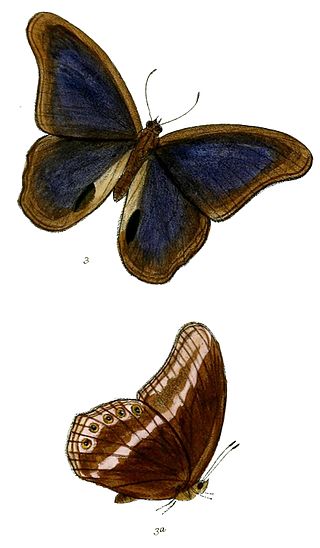
The First Anglo-Burmese War, also known as the First Burma War in English language accounts and First English Invasion War in Burmese language accounts, was the first of three wars fought between the British and Burmese empires in the 19th century. The war, which began primarily over the control of what is now Northeastern India, ended in a decisive British victory, giving the British total control of Assam, Manipur, Cachar and Jaintia as well as Arakan Province and Tenasserim. The Burmese submitted to a British demand to pay an indemnity of one million pounds sterling, and signed a commercial treaty.

Northeast India, officially known as the North Eastern Region (NER), is the easternmost region of India representing both a geographic and political administrative division of the country. It comprises eight states—Arunachal Pradesh, Assam, Manipur, Meghalaya, Mizoram, Nagaland and Tripura, and the "brother" state of Sikkim.

Pinus armandii, the Armand pine or Chinese white pine, is a species of pine native to China, occurring from southern Shanxi west to southern Gansu and south to Yunnan, with outlying populations in Anhui. It grows at altitudes of 2200–3000 m in Taiwan, and it also extends a short distance into northern Burma. In Chinese it is known as "Mount Hua pine" (华山松).

Bagyidaw was the seventh king of the Konbaung dynasty of Burma from 1819 until his abdication in 1837. Prince of Sagaing, as he was commonly known in his day, was selected as crown prince by his grandfather King Bodawpaya in 1808, and became king in 1819 after Bodawpaya's death. Bagyidaw moved the capital from Amarapura back to Ava in 1823.

Bassarona recta, the redtail marquis, is a species of nymphalid butterfly found in South and South-East Asia.

Bassarona teuta, the banded marquis, is a species of nymphalid butterfly.

Cigaritis is a genus of butterflies in the family Lycaenidae. Its species are found in the Afrotropical realm, the Indomalayan realm and adjacent regions of Asia.
Neope pulahina, the scarce labyrinth, is a nymphalid butterfly found in India and South Asia.

Clematis armandii is a flowering climbing plant of the genus Clematis. Like many members of that genus, it is prized by gardeners for its showy flowers. It is native to much of China and northern Burma. The plant is a woody perennial. It attracts bees, butterflies, and hummingbirds.

Neope bhadra is a nymphalid butterfly known from Asia, where it is found from Sikkim to Upper Burma.

Neope yama, the dusky labyrinth, is a species of satyrine butterfly found in Asia. In the Himalayas it is common from the eastern Himalayas to eastern Nepal and less common from western Nepal to Himachal Pradesh.

Neope pulaha, the veined labyrinth, is a species of satyrine butterfly found in Asia.

Euthalia monina, the powdered baron or Malay baron, is a species of nymphalid butterfly. The species was first described by Frederic Moore in 1859.

Neope is a genus of butterflies of the family Nymphalidae found in Asia.

Neope muirheadii, the black-spotted labyrinth, is a butterfly of the family Nymphalidae found in west and central China, Southeast Asia, and Taiwan.

Coelites is a Southeast Asia genus of butterfly in the family Nymphalidae (Satyrinae)

Arhopala perimuta, the yellowdisc oakblue or yellowdisc tailless oakblue, is a species of butterfly belonging to the lycaenid family described by Frederic Moore in 1857. It is found in Southeast Asia.

Arhopala camdeo, the lilac oakblue, is a butterfly in the family Lycaenidae. It was described by Frederic Moore in 1858. It is found in the Indomalayan realm.

Lethe kansa, the bamboo forester, is a species of Satyrinae butterfly found in the Indomalayan realm

















